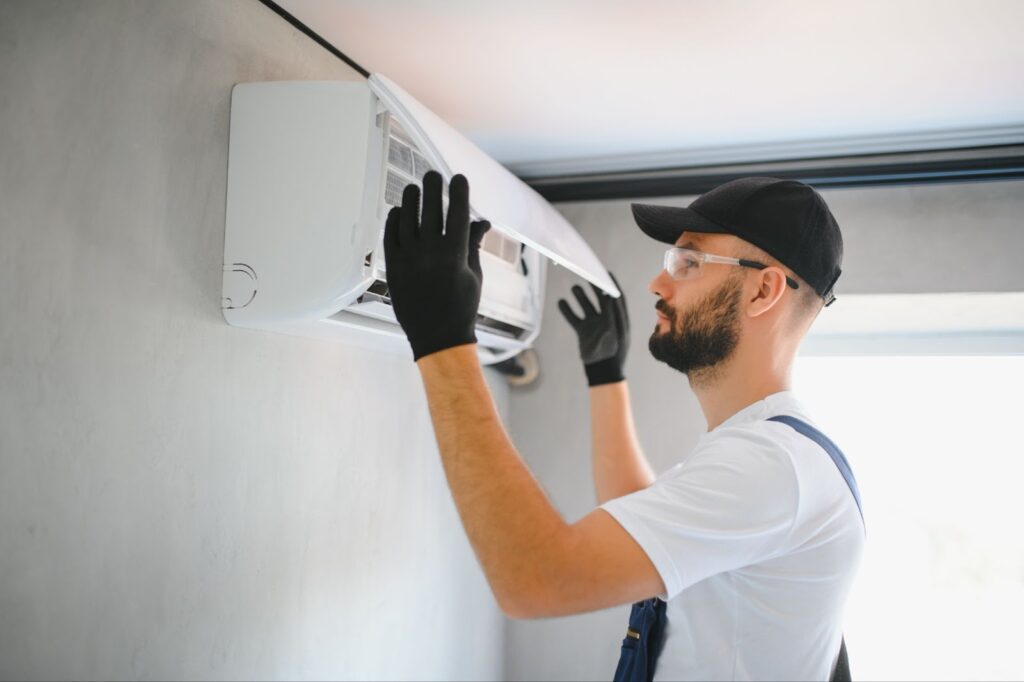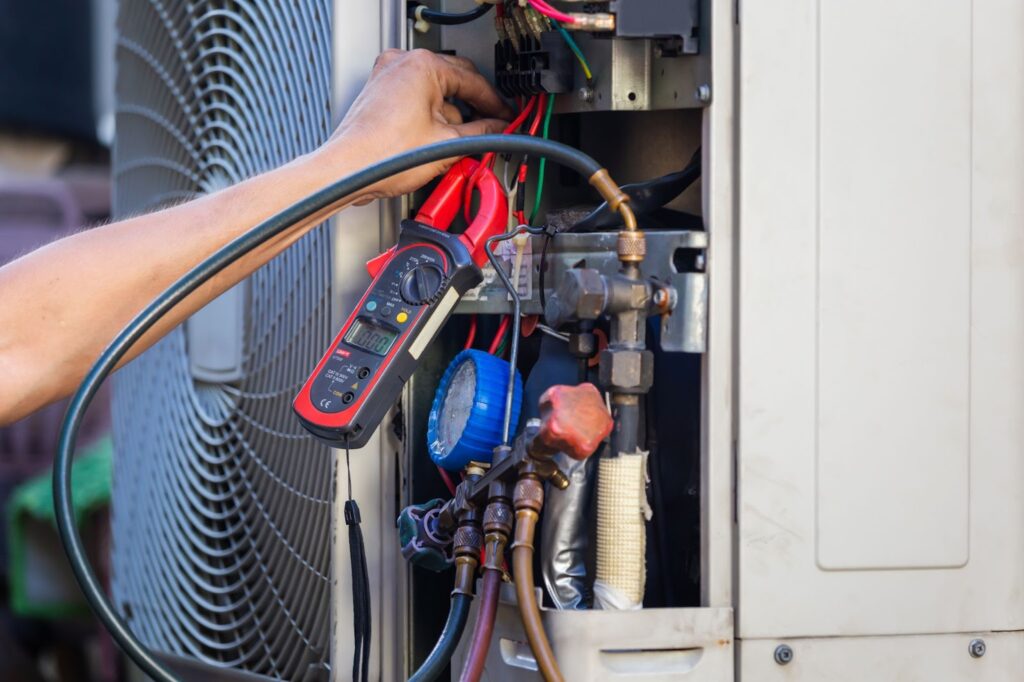As spring arrives and temperatures begin to rise, your air conditioner needs to be ready. Performing a seasonal AC tune-up helps you avoid unexpected breakdowns, improve performance, and reduce the risk of costly repairs when summer heat reaches its peak.
Spring maintenance keeps your AC system running smoothly by catching small issues before they escalate. When you clean essential components and inspect your unit early, your air conditioner runs more efficiently, uses less energy, and cools your home without added strain. This not only lowers your utility bills but also extends the life of your equipment.
Seasonal care also supports better indoor air quality. If anyone in your home struggles with allergies, replacing dirty filters and clearing out dust and debris can make a noticeable difference in how you breathe and feel.
Taking time to prepare your system now saves money, reduces frustration, and ensures comfort all season. In this blog, you’ll learn the top tips for getting your AC spring-ready — from spotting warning signs and cleaning vents to knowing when to bring in the pros for expert maintenance.
Check and replace your air filters
Air filters play a crucial role in keeping your air conditioner efficient and your indoor air clean. When filters become clogged with dust, dirt, and debris, they block airflow and force your system to work harder. This increases energy use, shortens the lifespan of your equipment, and decreases overall performance.
Check your filters every month to stay ahead of buildup. Most homeowners need to replace them every one to three months, depending on household conditions. If you have pets, smoke indoors, or live in an area with high pollen levels, you may need to change them more frequently.
Watch for warning signs that your filter needs replacing. Look for visible dirt on the filter surface, dust collecting around vents, or a musty smell when the system runs. If your airflow feels weaker than normal or your energy bills increase without explanation, your filter may be the problem.
Replace your air filter promptly to protect your system, improve efficiency, and support healthy indoor air quality. This simple step keeps your AC running smoothly and your home environment comfortable.
Clean your vents and registers
Vents and registers help your air conditioner move cool air efficiently through your home. When dust, pet hair, and debris build up, they block airflow and force your system to work harder. This extra strain leads to uneven cooling, higher energy bills, and unnecessary wear on your equipment.
Start by vacuuming each vent cover to remove surface debris. Wipe them with a damp cloth to clear any remaining dust. Use your vacuum’s hose attachment to reach inside the duct openings and remove loose buildup. If you notice excessive dust or reduced airflow, schedule a professional duct cleaning to improve system performance.
Walk through your home and check each register for obstructions. Move furniture, curtains, or rugs away from vents to allow unrestricted airflow. When you keep vents clear, you help your AC distribute air evenly and maintain a comfortable indoor temperature.
By cleaning your vents and registers regularly, you boost airflow, reduce system strain, and create a more efficient cooling environment. This simple task supports your AC system and helps your home stay comfortable all season.
Inspect the outdoor unit
Your outdoor AC system plays a critical role in cooling your home by releasing heat into the outside air. When leaves, dirt, and debris collect around the condenser, they block airflow and force the system to work harder. This buildup reduces efficiency and increases the risk of overheating.
Turn off the unit’s power before you begin. Clear away leaves, grass clippings, and other debris from the top and around the base. Use a soft brush or broom to clean the fins gently, and rinse the exterior with a garden hose to remove dirt. Avoid using high pressure, which can bend or damage the fins.
Create at least two to three feet of open space around the unit. Trim overgrown bushes, remove weeds, and move any nearby objects to give the condenser room to operate properly. Clear space helps the system release heat more effectively and reduces unnecessary strain.
While you inspect the unit, look for signs of wear or damage. Check for bent fins, rust, or disconnected wires. If you spot corrosion or anything that seems out of place, contact an HVAC professional to inspect and repair the issue before it gets worse.
Test the thermostat
Your thermostat controls your cooling system, so it needs to read temperatures accurately and respond quickly. When it fails to do so, your air conditioner may run inefficiently, cycle too often, or leave your home feeling too warm or too cold.
Start by lowering the temperature setting a few degrees below the room temperature. Listen for the AC to turn on, and check that cool air starts flowing from the vents within a few minutes. If the system doesn’t respond, inspect the thermostat for dead batteries, poor placement, or loose wiring.
Keep your thermostat away from heat sources, windows, and drafty areas. These spots cause false readings and force your system to work harder than necessary. Mount it on an interior wall where the temperature stays consistent for more accurate control.
If you want more flexibility and better energy management, upgrade to a smart thermostat. These devices allow you to adjust settings remotely, set schedules, and track energy use in real time. Many models even learn your habits and adjust automatically to save power without sacrificing comfort.
When you test your thermostat and keep it properly calibrated, you improve your system’s performance and maintain a comfortable indoor environment with less effort.

Check electrical connections and components
Your air conditioner depends on secure electrical connections to operate safely and efficiently. Wires, capacitors, relays, and terminals all work together to power the system and regulate performance. When these components loosen or corrode, they disrupt operation and increase the risk of breakdowns or electrical hazards.
Look for visible warning signs such as frayed wires, burn marks, or unusual smells around the unit. These signs often point to overheating or failing connections. Tight, clean wiring allows your AC to run smoothly and protects sensitive components from unnecessary stress.
Avoid opening the electrical panel or touching internal components unless you have professional HVAC training. Electricity presents serious safety risks, and mishandling wires can lead to injury or equipment damage.
Instead, schedule a licensed HVAC technician to inspect the system during your spring tune-up. Professionals test voltage, tighten connections, and check for worn parts to ensure your system meets safety standards and runs at peak performance.
Listen for unusual sounds or odors
When your air conditioner runs, it should operate quietly and smell clean. Your system may need immediate attention if you hear strange noises or notice unusual odors. Recognizing these early warning signs helps prevent costly repairs and protect your home’s comfort.
Grinding or screeching sounds often signal trouble with the fan motor or worn bearings. Buzzing may point to electrical problems, while rattling usually means something has come loose inside the unit. If you hear banging or clanking, a part might have broken off and could damage other components if left unchecked.
Pay attention to how your system smells, too. A musty odor often means mold or mildew is growing in your ductwork or near the evaporator coils. A burning smell could indicate overheated wires or melted insulation, which creates a serious fire hazard.
When you notice anything unusual, take action right away. Call a licensed HVAC technician to inspect your system and fix the problem before it worsens. Responding quickly keeps your AC running efficiently, avoids larger issues, and maintains a safe, comfortable home.
Schedule a professional tune-up
A professional HVAC tune-up gives your air conditioner the thorough care it needs to perform at its best. When you schedule a tune-up, a licensed technician examines, cleans, and tests every major component to ensure safe, efficient operation throughout the season.
During the visit, the technician cleans the condenser and evaporator coils, checks refrigerant levels, inspects electrical connections, tests safety controls, and lubricates moving parts. They also verify airflow, calibrate the thermostat, and look for signs of wear that could lead to breakdowns or reduced performance.
While changing filters and clearing vents help maintain your system, they don’t address the deeper mechanical and electrical components that impact long-term function. DIY efforts often miss subtle issues like low refrigerant or failing capacitors, which are problems that only trained professionals accurately detect and resolve.

Let Paragon Service Pros get your AC ready for spring
When you want the job done right, trust the experts at Paragon Service Pros. Our skilled technicians deliver honest, high-quality service that puts your comfort first. We go beyond basic checkups to ensure every part of your system runs safely and efficiently, so you stay cool and stress-free all season.Contact Paragon Service Pros today to schedule your AC tune-up and experience the unmatched service your home deserves.



